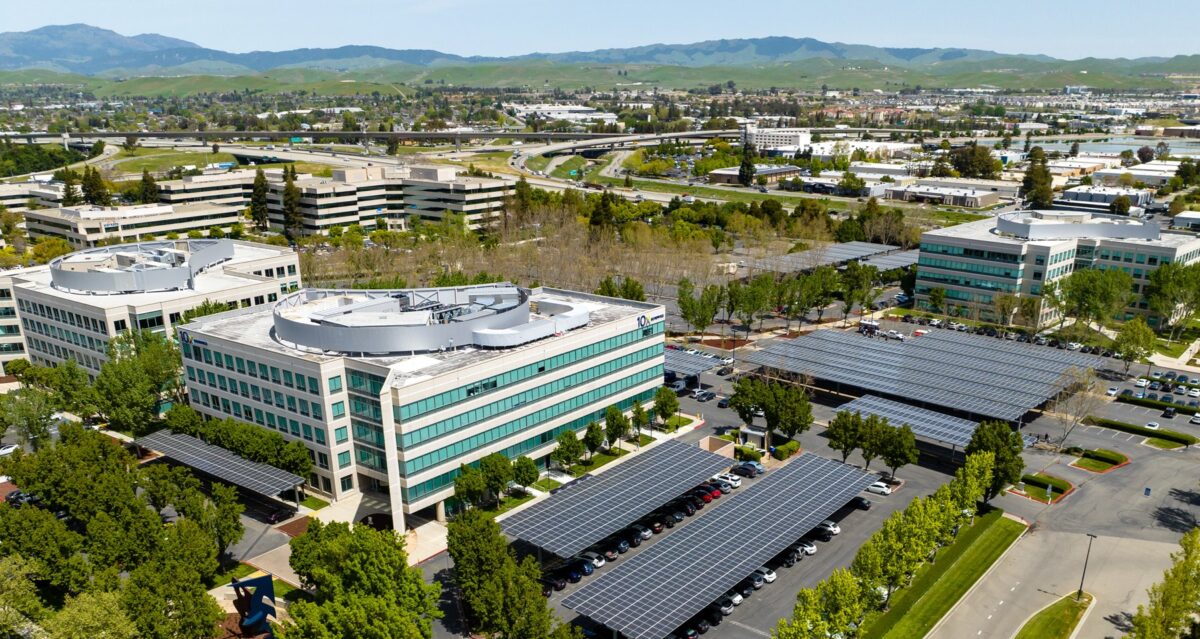An East Bay community east of San Francisco is rapidly achieving clean energy objectives set out in its Climate Action Plan of 2012. The city of Pleasanton, Calif., in February 2022 revised its Climate Action Plan plan to increase greenhouse gas reduction goals by 2030 to 70% (from 40% in its initial plan), and become carbon neutral by 2045, as a metric of carbon emissions below 1990 levels.
In a 2022 State of the City speech, Pleasonton Mayor Karla Brown said the East Bay community, located in Alameda County, has a long-term strategy to improve the quality of life and public heath, promote community resilience, and promote thriving ecosytems while projecting to save $585,000 to the the city’s budget each year through sustainability initiatives. To that end, its 2022 CAP 2.0 action plan places solar and energy storage on “covered projects” as item number four on a 16-point primary action strategy for sustainability initiatives grouped by energy, transportation, materials, natural systems, water and community resilience.
With rooftop solar, the Pleasanton community aims to reduce 2,300 metric tons of carbon dioxide emissions per year and see its commercial buildings generate 38% less emissions. To date the city has has procured residential and commercial power from regionally located wind and solar resources via East Bay Community Energy, a community choice aggregator.
Now two Pleasanton commercial building operators, Hines and Principal Asset Management, are able to participate in the city’s net zero vision, interconnecting 1.95 MW of total capacity solar canopy projects and various building rooftop solar arrays currently in various stages of development.
Hines, a Houston-based private real estate investment firm, announced the completion of 1.4 MW at two solar canopy systems installed by DSD Renewables and managed by Black Bear Energy.
The two corporate office building projects generate 957 kW and 429 kW, respectively, and are expected to generate 2 GWh of clean power per year, the equivalent of powering 287 homes.
“Net zero commitments are a rapidly increasing focus for both landlords and tenants alike. As more turn to renewable energy to meet these goals, we’re happy to be a part of these projects that push the industry in the right direction, while saving money for all parties involved with low-cost, clean electricity,” said Drew Torbin, president of Black Bear Energy.
The second Pleasanton solar array is currently under construction at two buildings for landlord Principal Asset Management. Those two sites will generate 282 kW and 272 kW of power, producing 940 MWh of clean energy per year, the equivalent of 130 homes. The projects are anticipated to be operational by the end of 2023.
The projects are the first two out of four Principal-owned office campuses to install solar arrays, with the remainder of systems to begin construction this summer, and include rooftop solar, canopy solar and storage systems.
“These projects demonstrate our commitment to net zero carbon emissions by 2050,” said Jennifer McConkey, managing director of ESG and operations for real estate at Principal. “The clean, renewable energy generated by these installations will be used to power our Signature Center buildings and minimize electricity costs.”
Black Bear Energy, a Legence company, facilitated the energy procurement aspects of the four commercial building projects’ construction, while DSD Renewables will construct and own the projects upon completion.
This content is protected by copyright and may not be reused. If you want to cooperate with us and would like to reuse some of our content, please contact: editors@pv-magazine.com.









By submitting this form you agree to pv magazine using your data for the purposes of publishing your comment.
Your personal data will only be disclosed or otherwise transmitted to third parties for the purposes of spam filtering or if this is necessary for technical maintenance of the website. Any other transfer to third parties will not take place unless this is justified on the basis of applicable data protection regulations or if pv magazine is legally obliged to do so.
You may revoke this consent at any time with effect for the future, in which case your personal data will be deleted immediately. Otherwise, your data will be deleted if pv magazine has processed your request or the purpose of data storage is fulfilled.
Further information on data privacy can be found in our Data Protection Policy.